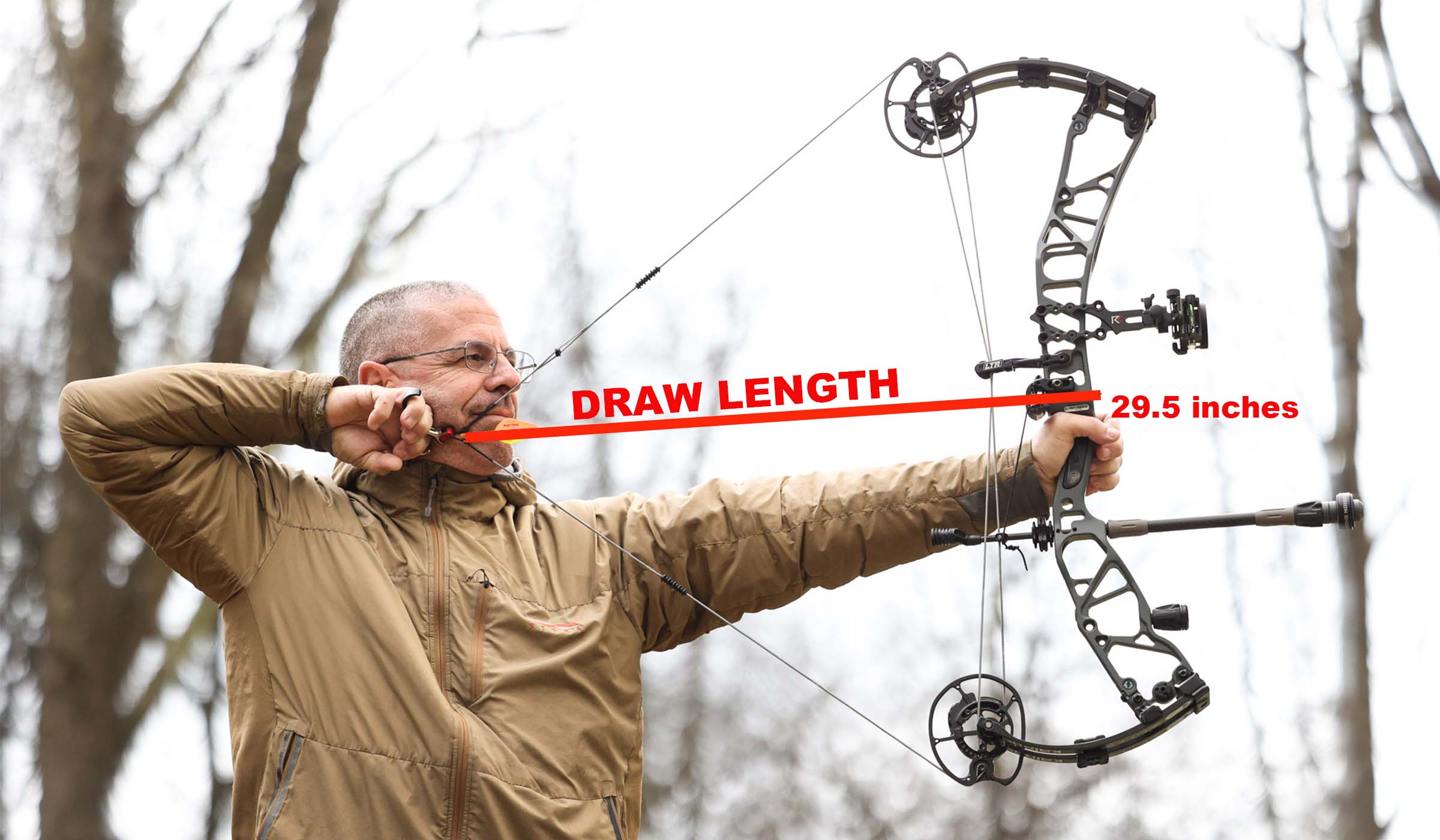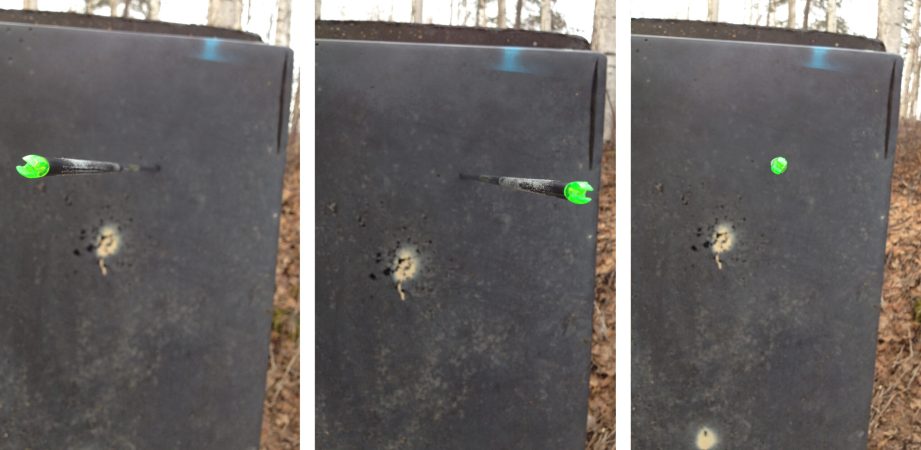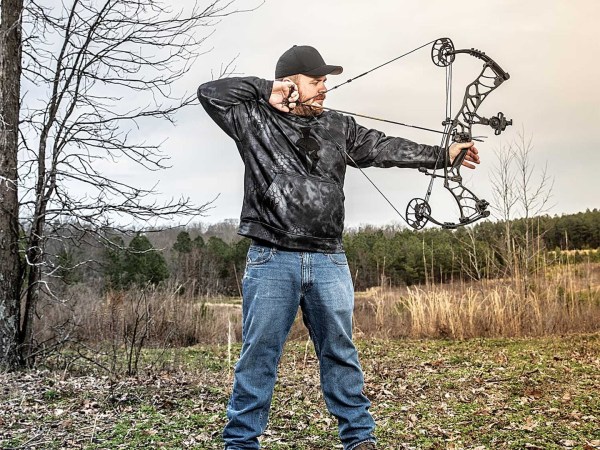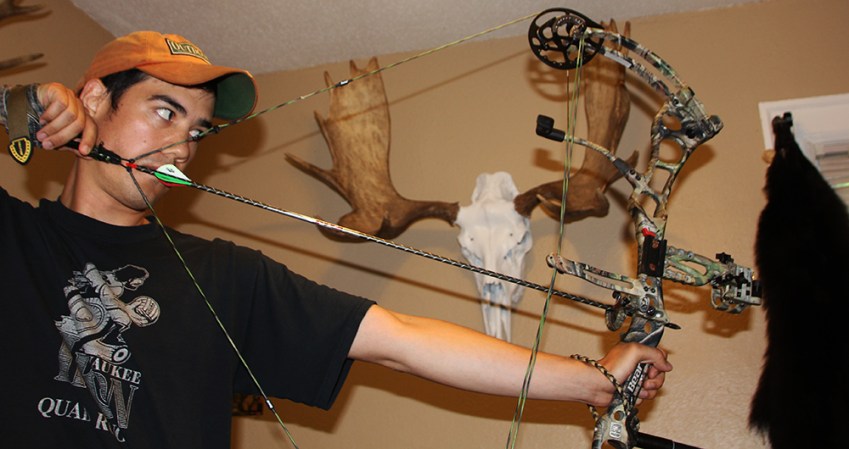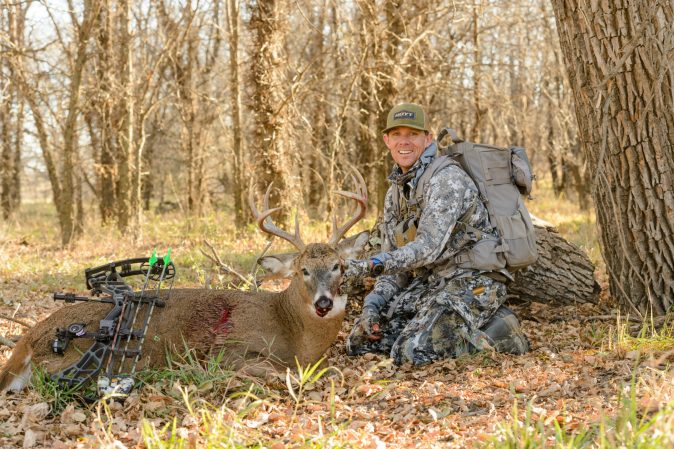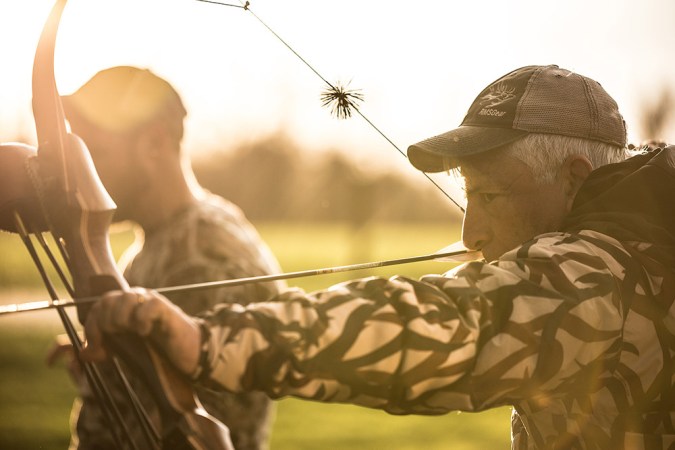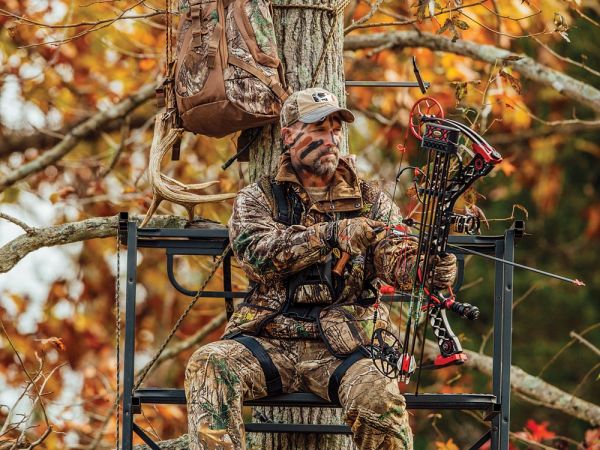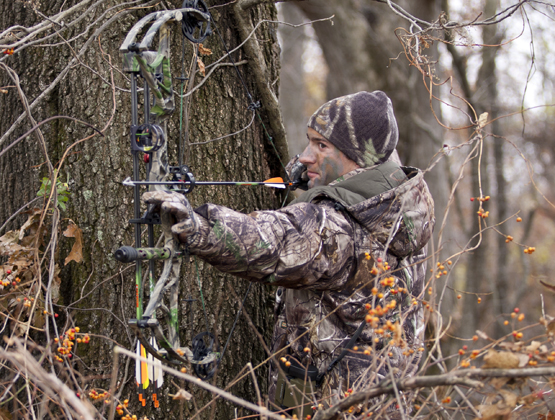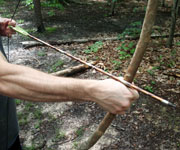We may earn revenue from the products available on this page and participate in affiliate programs. Learn More ›
Draw length is a measurement of how far an archer pulls a bow string. It’s a specification that will inform your arrow length, bow set up, and choosing a bow. Here’s a breakdown on how to measure draw length and why it’s a critical part of archery form.
How to Measure Draw Length
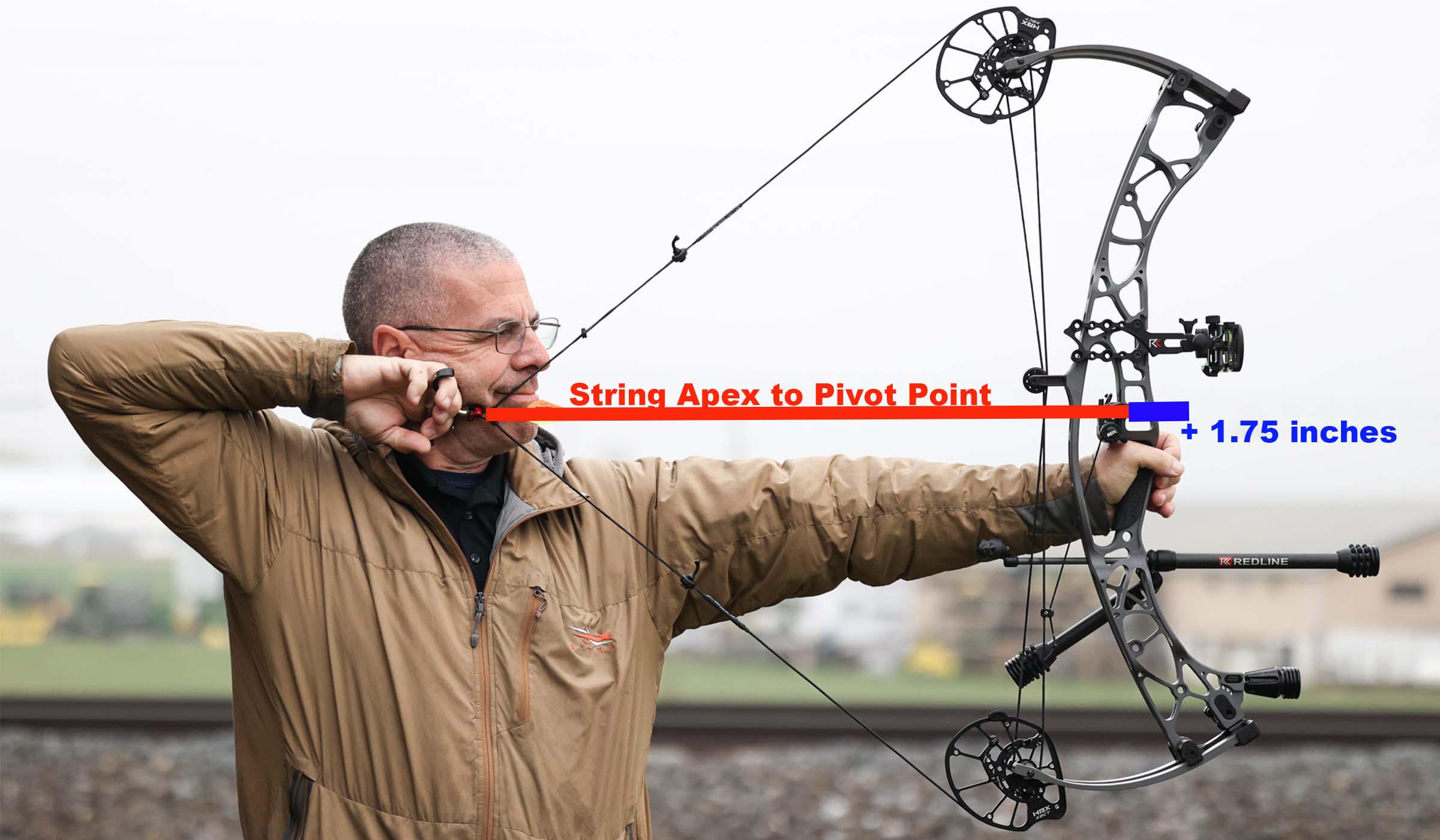
Natalie Krebs
Draw length on a compound or recurve bow is measured from the apex of the string to the deepest part of the grip (or pivot point), plus 1.75 inches. Let’s say you put a compound on a draw board and measure from the nocking point to the deepest part of the grip and get 27.25 inches. You’d then add 1.75 inches to get the final draw length, which is 29 inches. This method is the ATA standard and how nearly all manufacturers spec their bows.
How to Find Your Draw Length
You know how to measure your bow’s draw length, but how do you determine the best draw length for you? Here are a few methods.
Getting Fitted at an Archery Shop
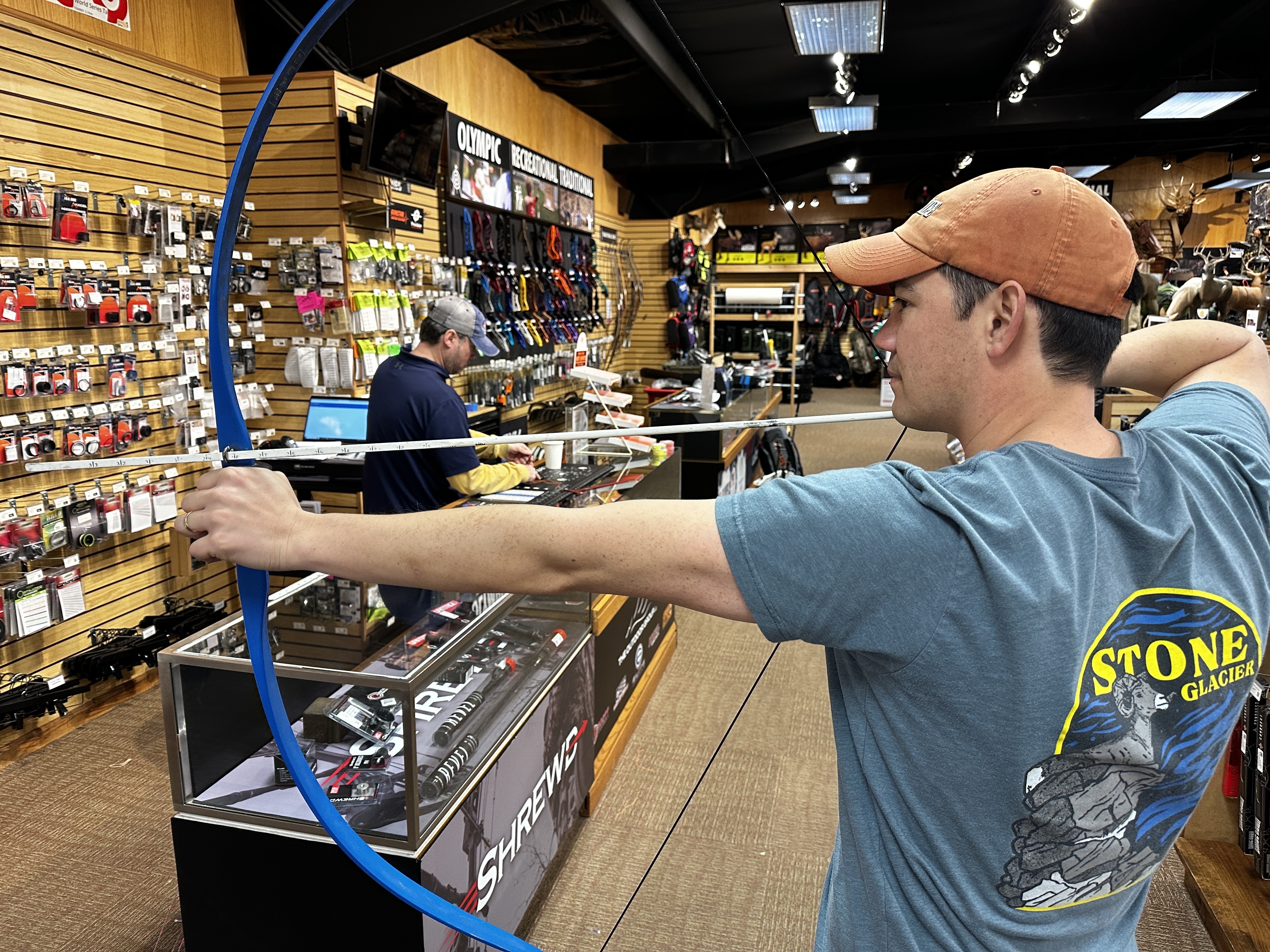
Scott Einsmann
A draw length measuring tool, like the one above, is commonly used at archery shops to help new archers get a starting point for their draw length. It’s simply a light bow with a measuring “arrow” that the archery pulls to their anchor point.
Wingspan to Draw Length Conversion
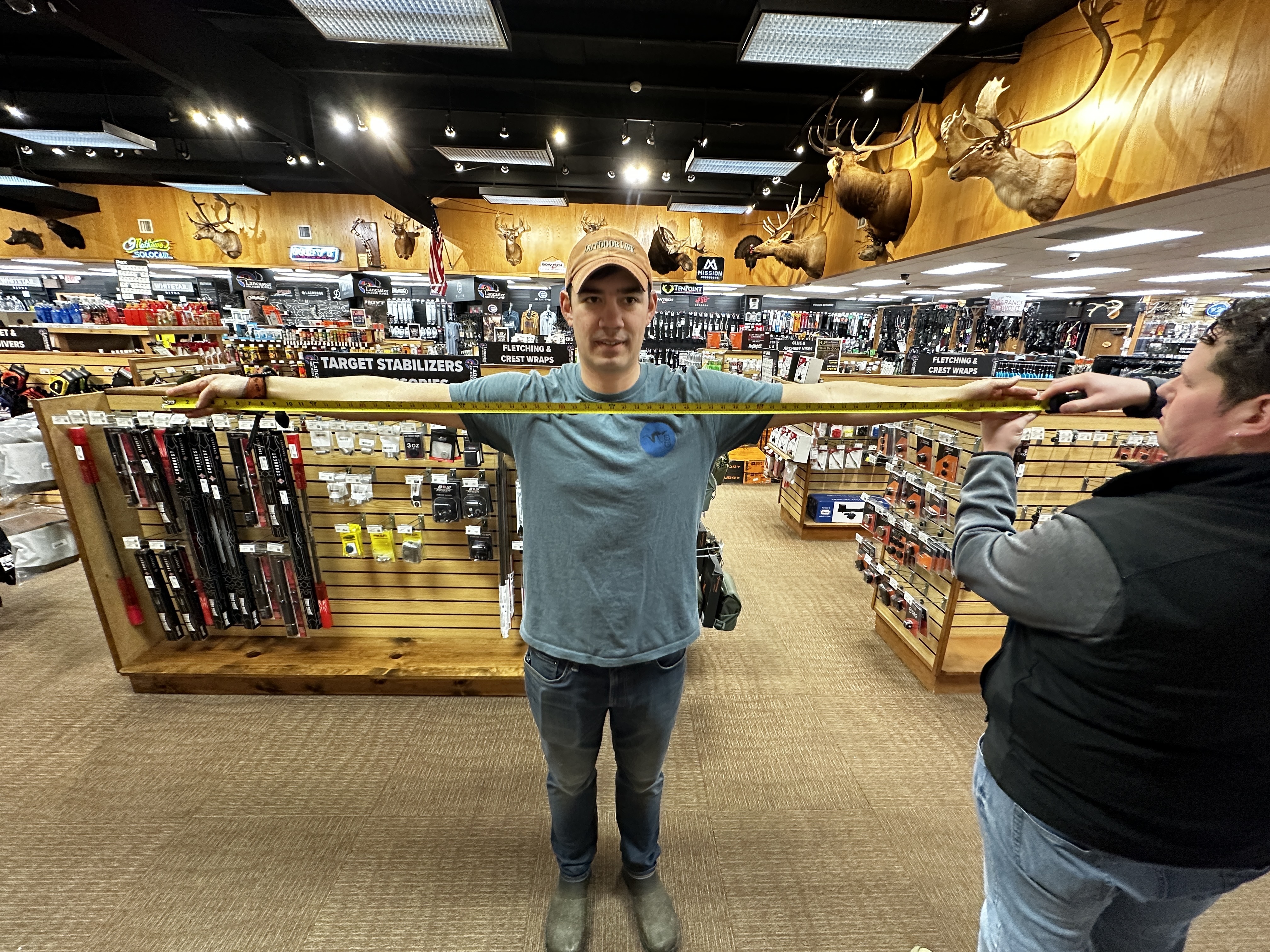
Scott Einsmann
- Step 1: Measure your Wingspan
- Step 2: Divide that number by 2.5
The number you get from this method on how to measure draw length should only be considered a rough starting point.
Perfecting Your Draw Length
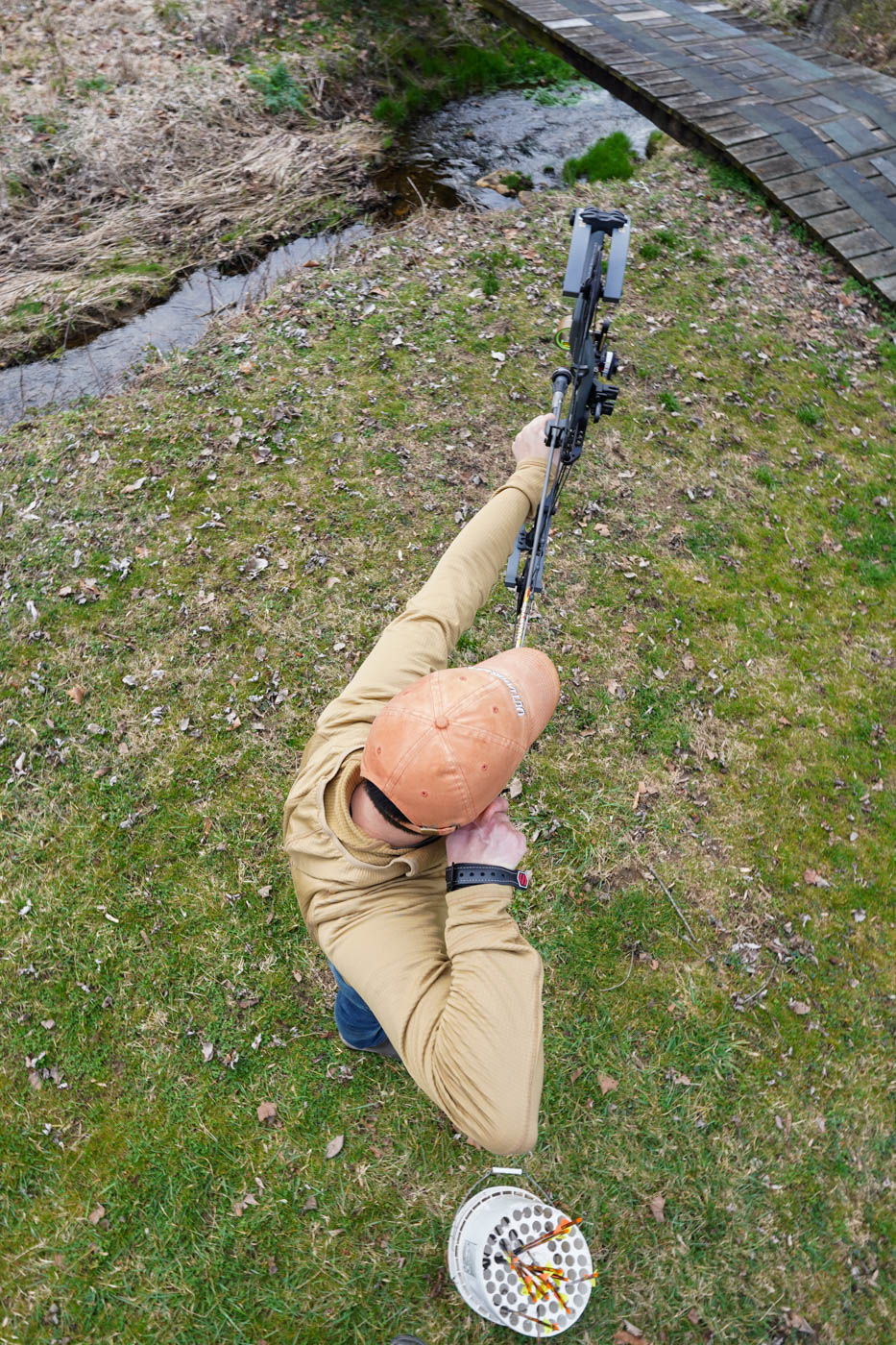
Scott Einsmann
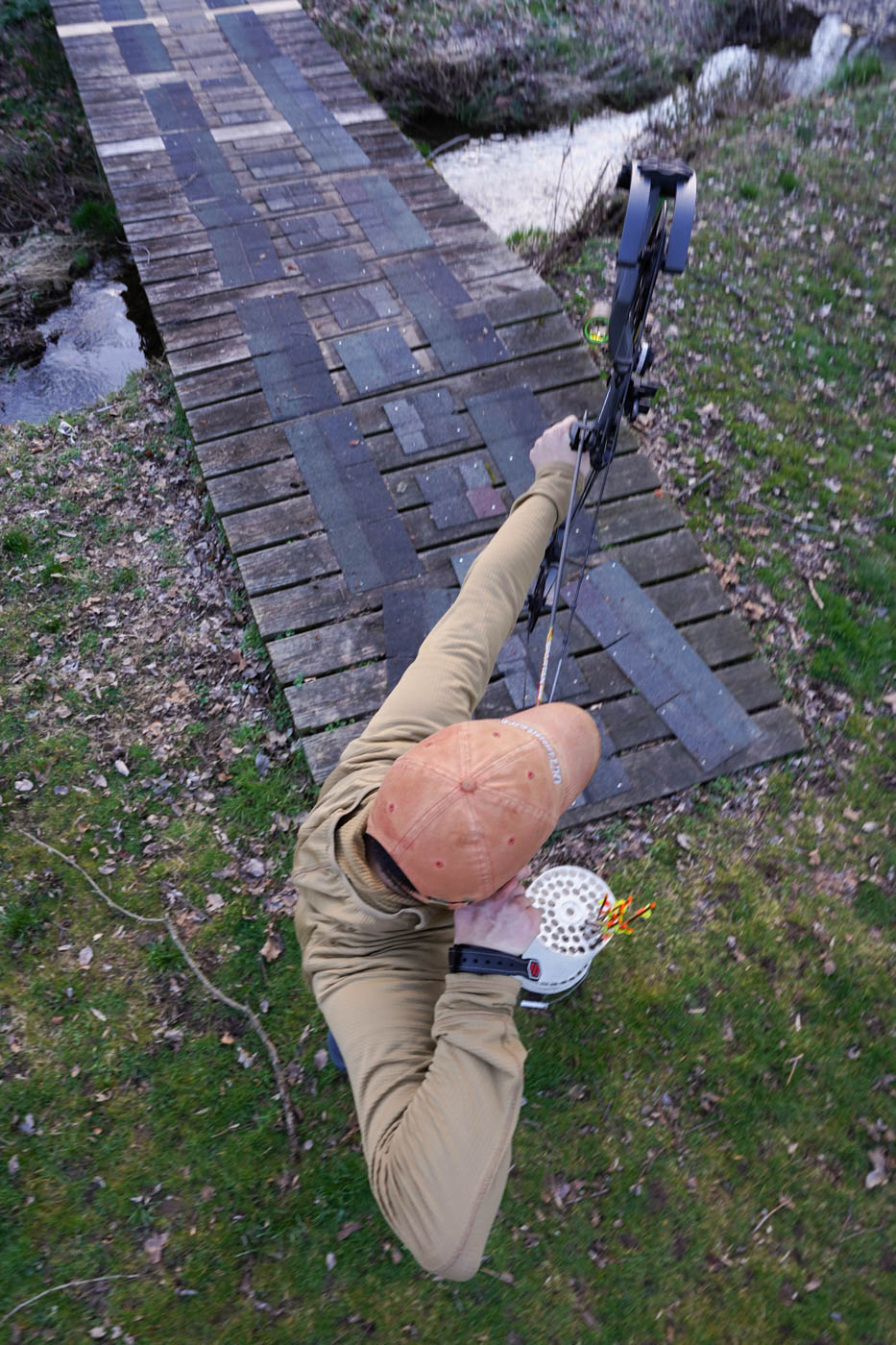
Scott Einsmann
To find your true draw length you’ll need to understand alignment, which is one of the basic principles of archery from. When you are in proper alignment your shoulders will be pointed toward the target and your elbow will be inline with your arrow (see the diagram below). It’s helpful to use a stretch band or a light draw-weight bow without a draw stop like a recurve or Genesis when learning alignment.
Read Next: How to Shoot a Compound Bow
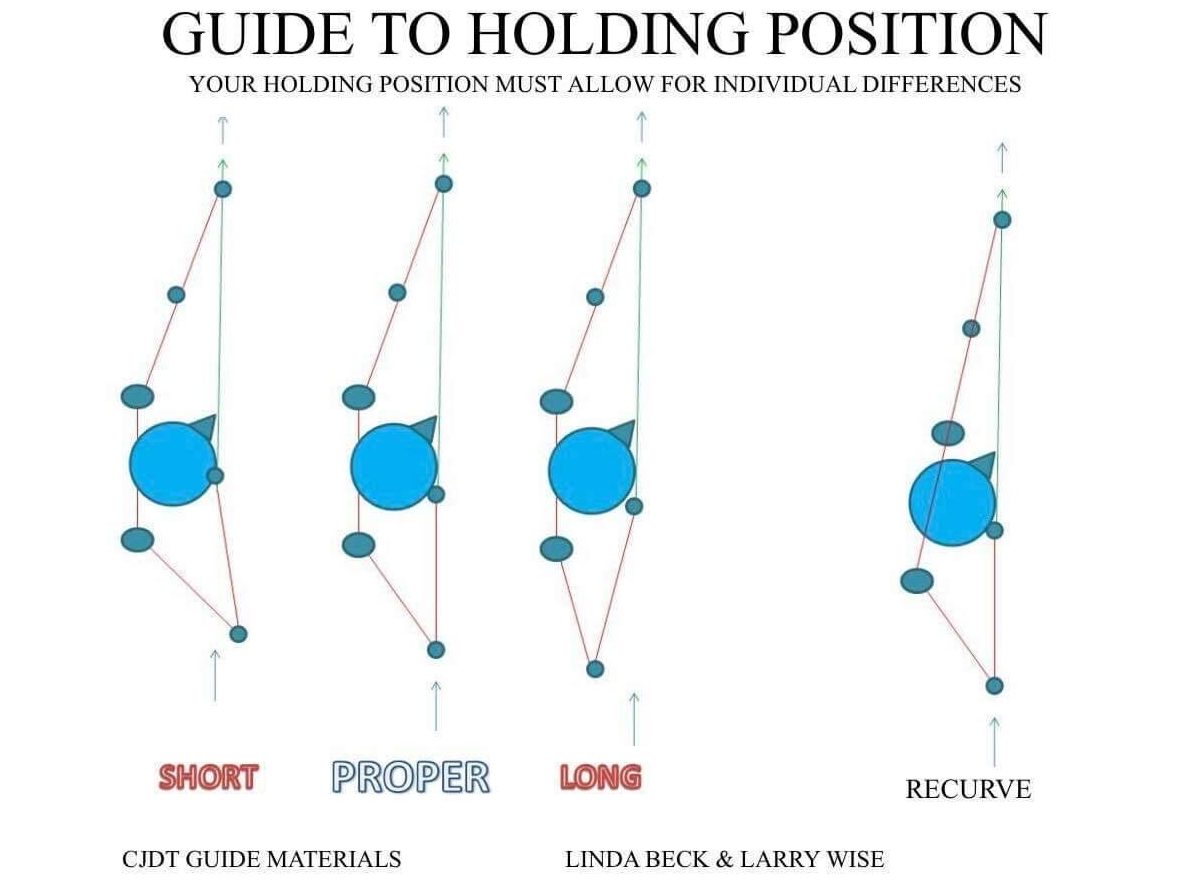
USA Archer
If you’re shooting a recurve or longbow, draw back the bow, and get yourself into alignment. Then have someone mark your arrow inline with the bow’s pivot point. If you measure from the throat of your nock to that mark and add 1.75 inches you’ll have your draw length.
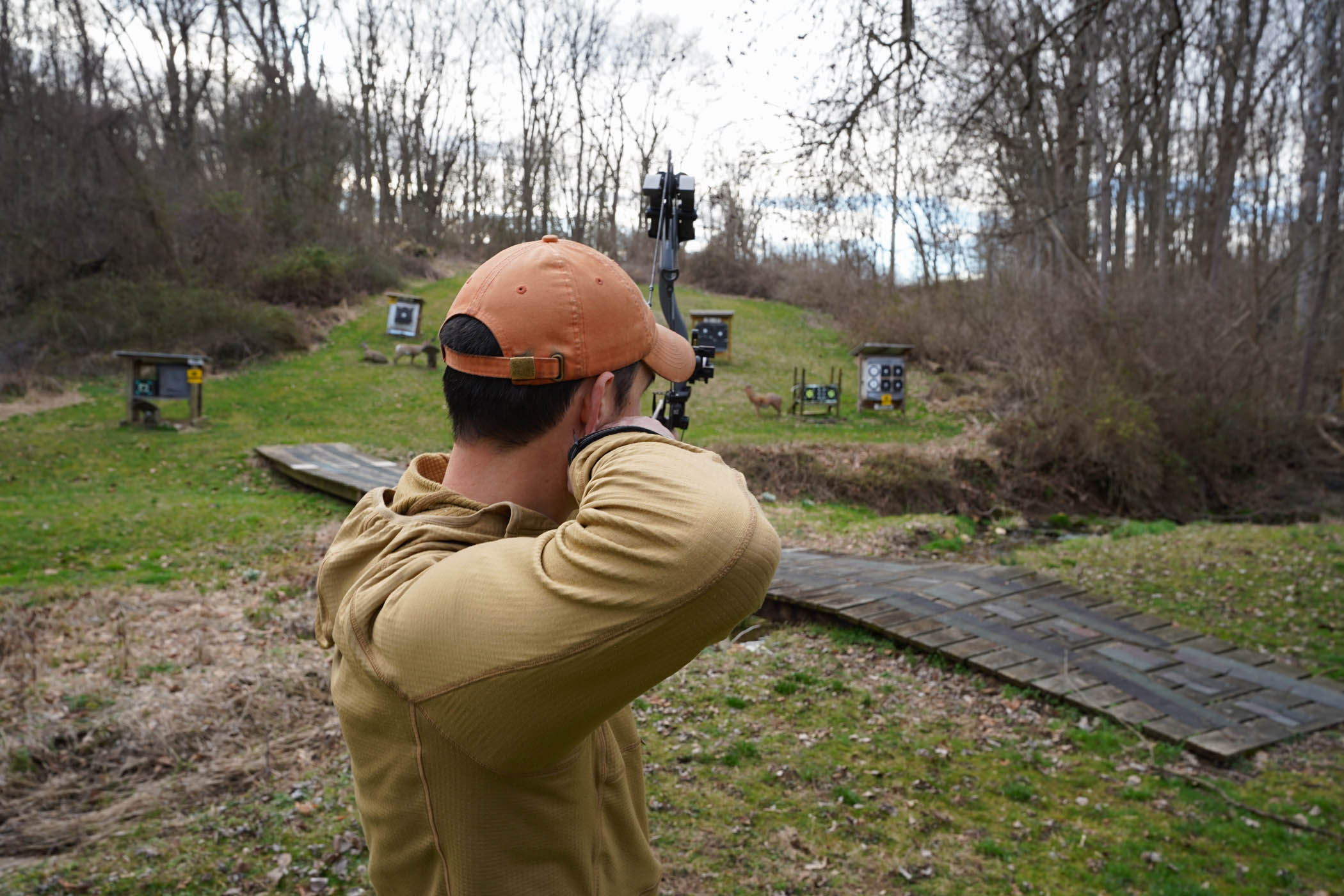
Scott Einsmann
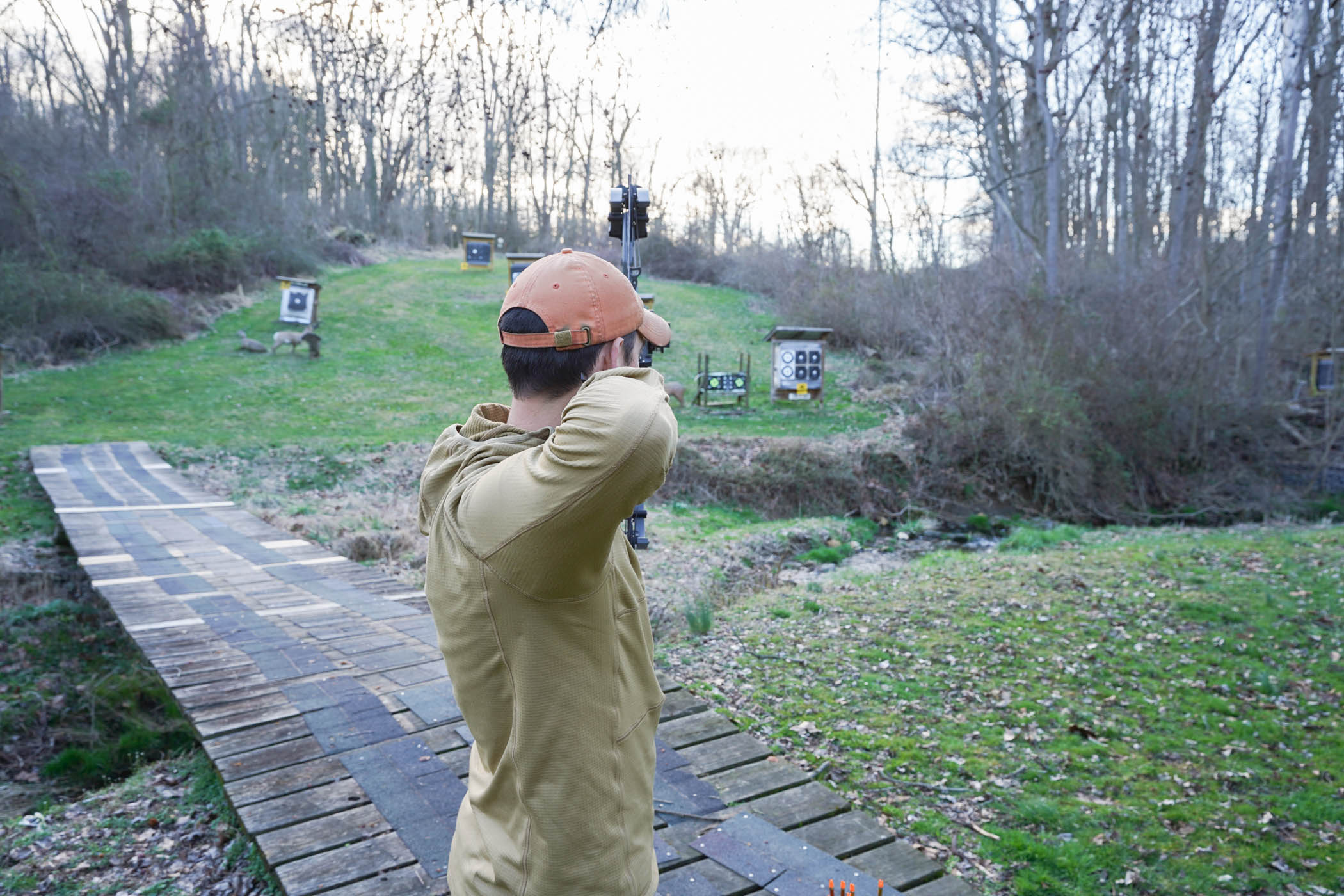
Scott Einsmann
For compound archers, you’ll use your wingspan conversion as a starting point and make .5-inch adjustments until you find the setting that allows you to be in perfect alignment.
An archery coach is the best person to help you find alignment, but if you don’t have one in your area, recording yourself from behind and having someone take a photo from above can help. In the photos you’ll look for your shoulders to be parallel with the arrow and your elbow positioned inline with your nock. Also make sure that your posture looks good, no leaning, and that your shoulders are low. You should feel steady and strong when you’re in alignment. It’s important to note that not all archers will be able to achieve textbook alignment. If you don’t feel steady and strong, or experience pain, don’t force yourself into that position.
Read Next: Prevent Archery Shoulder Injuries
Common Things That Change Draw Length
As you progress in archery you might make changes to your equipment or form that cause your draw length to become longer or shorter.
Grip: If you raise or lower your bow’s grip angle your draw length will change.
Form Improvements: Archery relies on bone-to-bone support rather than muscle. As you learn how to use less muscle and instead use your skeletal structure, your draw length will increase.
Release Aids: Handheld release aids with different neck lengths can affect your draw length.
The Upshot: Why Proper Draw Length Matters
Learning how to measure your draw length is a helpful skill for selecting arrows and bows. The real benefit comes from dialing in your draw length for proper alignment, which makes archery easier and shooting more comfortable. With good alignment you’ll be able to use your skeletal structure, rather than muscle, to brace the weight of your bow. That means you won’t get tired easily and shooting will be less work. Another benefit is that you’ll see considerably less pin movement with your optimal draw length.

